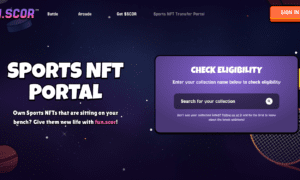Trade finance is the backbone of global trade, enabling businesses to buy and sell goods and services internationally. However, traditional trade finance systems often face challenges like delays, fraud, and lack of transparency. Enter blockchain technology a revolutionary solution that’s transforming the way trade finance operates by enhancing security, improving transparency, and streamlining processes.
What is Blockchain?
At its core, blockchain is a digital ledger that records transactions in a secure, decentralized, and tamper-proof manner. Each transaction is stored in a “block” and linked to the previous one, forming a “chain” of data. Because the data is distributed across a network of computers, it’s incredibly secure and transparent.
Think of blockchain as a shared Google document where everyone involved can see updates in real time, but no one can alter past entries without everyone noticing.
Challenges in Traditional Trade Finance
Before looking into how blockchain helps, let’s look at some issues in the current trade finance system:
Complex Paperwork: Processing trade transactions involves mountains of paperwork, from letters of credit to invoices, making the process slow and error-prone.
Fraud Risks: Fake documents and double financing are common risks in traditional systems.
Lack of Transparency: Parties involved often struggle to get a clear, real-time view of the transaction process.
High Costs: Intermediaries like banks and brokers add layers of cost and time to transactions.
How Blockchain Enhances Trade Finance
Blockchain technology addresses these challenges in several ways:
Improved Security
Blockchain’s decentralized nature makes it nearly impossible for hackers to alter data. Each transaction is encrypted and verified by the network before being added to the chain. This ensures that trade documents, like bills of lading and letters of credit, are authentic and tamper-proof.
Real-Time Transparency
All parties in a blockchain network have access to the same real-time data. This eliminates discrepancies and builds trust between buyers, sellers, and financial institutions. For example, a supplier can instantly verify a buyer’s payment status without waiting for bank confirmation.
Faster Transactions
Smart contracts self-executing contracts with the terms directly written into code automate processes like payment releases and document verification. This reduces the time required for transactions, which traditionally take days or weeks.
Reduced Costs
By cutting out intermediaries and automating processes, blockchain significantly lowers transaction costs. Businesses can save money on fees and focus on growing their trade operations.
Fraud Prevention
Blockchain’s immutable records ensure that data cannot be duplicated or altered. This eliminates risks like double financing, where businesses secure loans from multiple banks for the same transaction.
Real-World Applications of Blockchain in Trade Finance
Several companies and organizations are already leveraging blockchain to transform trade finance:
We.Trade: A blockchain-based platform connecting buyers, sellers, and banks to streamline trade processes.
Marco Polo Network: This network uses blockchain to provide secure and efficient trade finance solutions for businesses.
IBM’s TradeLens: Focused on the shipping industry, TradeLens uses blockchain to track shipments and reduce delays.
Benefits for Youth and Entrepreneurs
For young entrepreneurs and small businesses, blockchain offers a level playing field in global trade. Here’s how:
Access to Financing: Blockchain platforms enable small businesses to secure trade financing more easily by providing transparent and verifiable transaction histories.
Streamlined Operations: Automated processes reduce the burden of managing complex trade documentation.
Global Reach: Blockchain connects businesses worldwide, opening up new opportunities for cross-border trade.
Challenges and Limitations
While blockchain has immense potential, it’s not without challenges:
Adoption Barriers: Many businesses are hesitant to adopt blockchain due to lack of understanding or fear of change.
Regulatory Uncertainty: Different countries have varying regulations on blockchain, which can complicate implementation.
High Initial Costs: Setting up blockchain infrastructure can be expensive, especially for small businesses.
The Future of Blockchain in Trade Finance
The future looks promising. As more businesses and governments embrace blockchain, we can expect:
Standardized Regulations: Governments are working towards creating unified blockchain policies to facilitate global trade.
Increased Collaboration: More partnerships between blockchain startups and traditional financial institutions will drive innovation.
Wider Adoption: As teczhnology becomes more accessible, businesses of all sizes will benefit from blockchain’s advantages.
Conclusion
Blockchain is more than just a buzzword; it’s a game-changer for trade finance. By enhancing security, transparency, and efficiency, blockchain empowers businesses to navigate global trade with confidence. For youths and entrepreneurs, it’s an opportunity to embrace innovation and unlock new possibilities in the world of commerce.
The journey of blockchain in trade finance is just beginning, and its potential to revolutionize the industry is limitless. Are you ready to be part of the change?



































